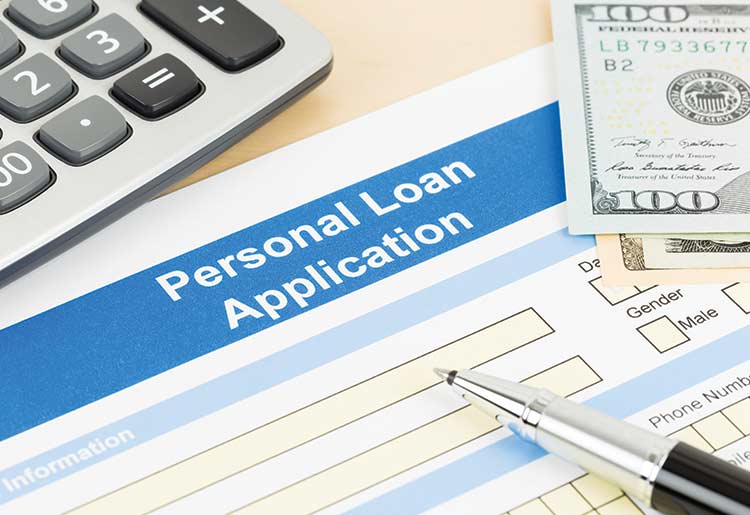
Step 1: Monitor Your Credit Score
The more credit you apply for, the lower your credit score will become, so keep credit applications to a minimum. This especially pertains to credit applications that get rejected. SoFi, one of the leading providers of personal loans on the market, does a “soft” credit pull when you fill out an online application. This type of credit check has no negative impact on your credit.
Keep up to date with your credit score by requesting your credit report on an annual basis, and review it to ensure that all of the information is accurate. Remember that there are personal loans available to all credit scores, but it's always preferable to improve your credit score if possible.
Step 2: Increase Your Credit Score
If you’ve checked your credit and it isn’t as high as you’d like, you can improve on it and correct any blips on the radar before shopping around. You have the power to change your credit score by:
- Paying on time
- Decreasing your debt:credit ratio
- Waiting for a minimum of 6 months after any blips on your credit record before submitting your loan application.
- Contacting the lender in the case of any bad credit, and requesting for the negative report to be removed from your record.
Before taking steps to improve your credit, assess where your credit score lies to see if it’s worth the effort to improve your score:
- Excellent Credit – 760+
- Good Credit – 700+
- Fair Credit – 640+
If you’re already above the 760 mark, your credit score is already excellent and improvement won’t change your interest rates or terms.
Step 3: Decide on the Right Lender for You
Be realistic about who will lend you money. For those who have a credit score of lower than 700, you’re not likely to be approved by any major bank. And if you are, the interest rates will likely be high. However, that doesn't mean you don’t have options. Even if you don’t have the best credit record, there are lenders out there who will provide you with a personal loan - such as peer-to-peer lenders, which often provide loans at a decent interest rate. LendingTree, a marketplace of lenders competing for your business, lets you see loan offers from multiple non-traditional lenders. You fill out just a single application and all of the viable lenders on LendingTree’s network compete for your business. This is a good way to ensure that you get the most competitive rate and terms that you can.
Regardless if you apply for a personal loan with a traditional lender, such as a bank, or a peer-to-peer lender, make sure you are aware of all the terms and conditions fully before committing.
Step 4: Look Into Online Lenders
You’ll most likely find the best rates by shopping around on the web, as online lenders have low operating costs, which translates to lower interest rates than their brick-and-mortar counterparts. There are also plenty of scams out there, so always ensure that your lender is a state-licensed institution with no lawsuits to its name. Even better, check their rating with the Better Business Bureau. Lending Club is an online peer lender that has an A+ BBB rating and has been touted by Forbes as one of America’s most promising companies.
Step 5: Become Familiar with Your Debt-to-Income Ratio
Make sure you don’t over borrow. You want your income to be high relative to your debt. Curious what your debt to income ratio is? Use this simple formula:
Debt-to-income Ratio = Total recurring debt / gross income
For example, if your total debt is $100,000 and your gross income is $200,000, your debt-to-income ratio is 50%. A general rule of thumb - and what banks would prefer to see - is a ratio below 36%. The lower the number, the better chance of obtaining a personal loan with the best possible interest rate.
Step 6: Calculate the Terms and Payments of Your Loan
Tip: Calculate your fixed rate loan yourself. With this simple tutorial, you can make a personal loan calculator in excel. Loan calculators are a great resource to plan borrowing. They're easy to find on the internet and simple to use, but you do have to understand certain ideas and terminology to make them work. Follow the steps and tips below to put a loan calculator to work for you.
How Much is Just Right?
Whatever your purpose, make sure you know how much money you need. Borrowing too little leaves you short of your goal, and too much can bust your budget. Assess your need and enter this figure into the calculator as "Loan Amount.”

How Do You Rate?
The cost of your loan is expressed as the annual interest rate. You can estimate your rate by asking the lender what they typically charge for the type of loan you want. You can also look online for current market rates. Regardless of the method, be certain you'll be able to borrow at the rate you enter as "Annual Interest Rate" in the calculator. To be safe, it's a good idea to use a slightly higher rate to provide a margin for error in your estimate.
Make Sure Time is on Your Side
Enter the length of your loan into the "Term" section of the calculator. Lenders allow different terms depending on loan type, so check with them or review online resources to understand how long you'll likely be allowed to repay. Always consider shorter terms if they fit your budget. A shorter loan eliminates debt quicker and saves significant money on interest.
The Payoff
With these three inputs, calculate your monthly payment by clicking "Submit" or "Calculate." In most cases the payment provided will be the monthly payment, though some calculators allow you to choose bi-weekly or annual payments. Use these calculations to assess whether your budget can support the personal loan you’re looking to take out. Smart planning with a loan calculator can help you understand if your loan is likely to be approved before you even sit down with the lender.
If you follow this 6-step guide, do your homework and read reviews of the best personal loan providers, you’ll be able to secure a personal loan that fits your budget - at the best possible rate.

|
Minimum credit score: 680
Loan amount: $1,000 to $100,000 Loan term: 18 - 84 months APR range: 5.20% - 35.99% |
Get Started |

|
Minimum credit score: none
Loan amount: $1,000 to $50,000 Loan term: 3 - 180 months APR range: 6.99% - 35.99% |
Get Started |
.20200313084911.svg)
|
Minimum credit score: 600
Loan amount: $1,000 - $40,000 Loan term: 3 or 5-year terms APR range: 8.05% - 35.89% |
Get Started |
.20201027103055.png)
|
Minimum credit score: none
Loan amount: $1,000 to $40,000 Loan term: 24 - 84 months APR range: 5.99% - 35.99% |
Get Started |

|
Minimum credit score: 620
Loan amount: $1,000 to $50,000 Loan term: 2 or 5 years APR range: 8.49% - 35.99% |
Get Started |

